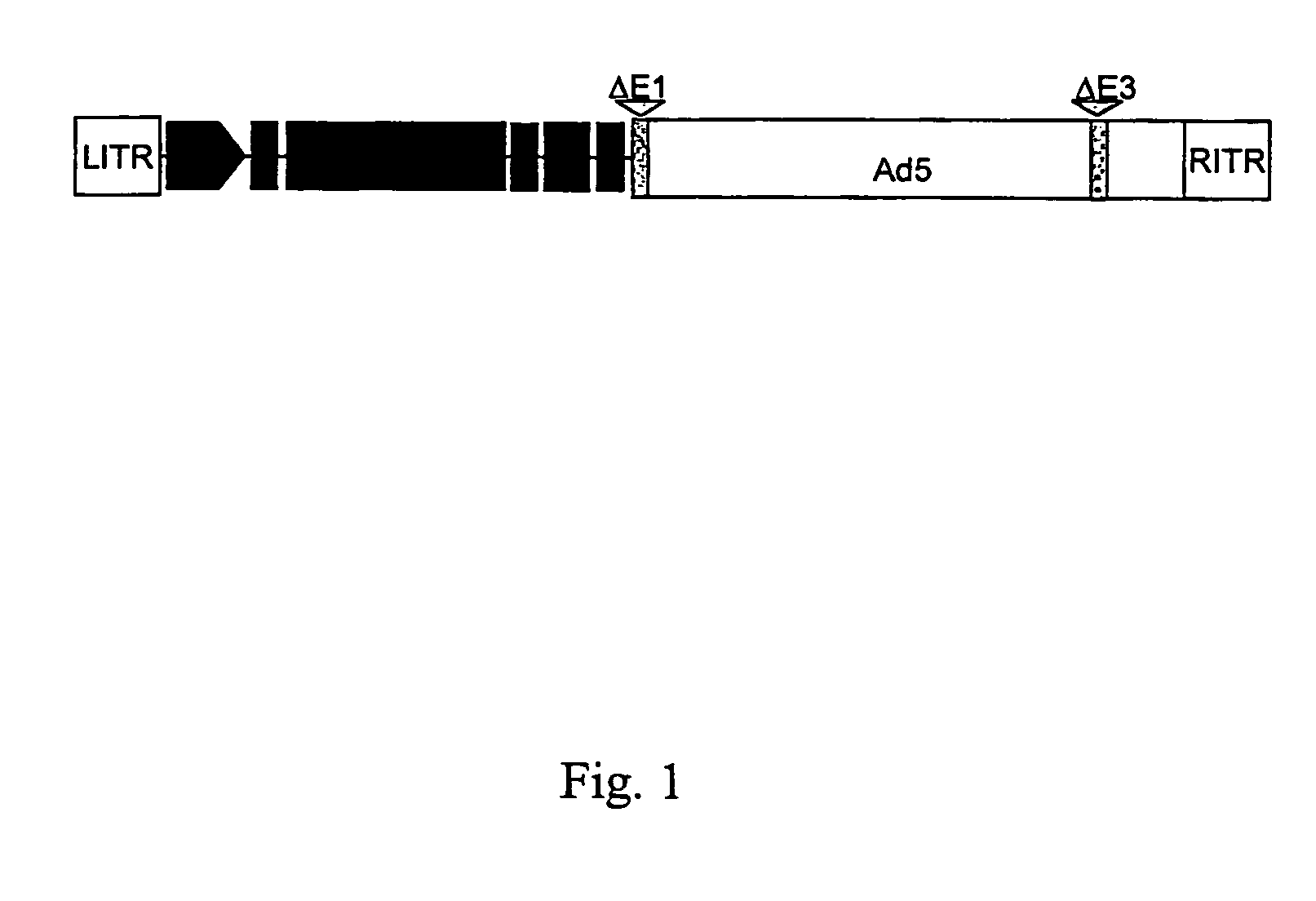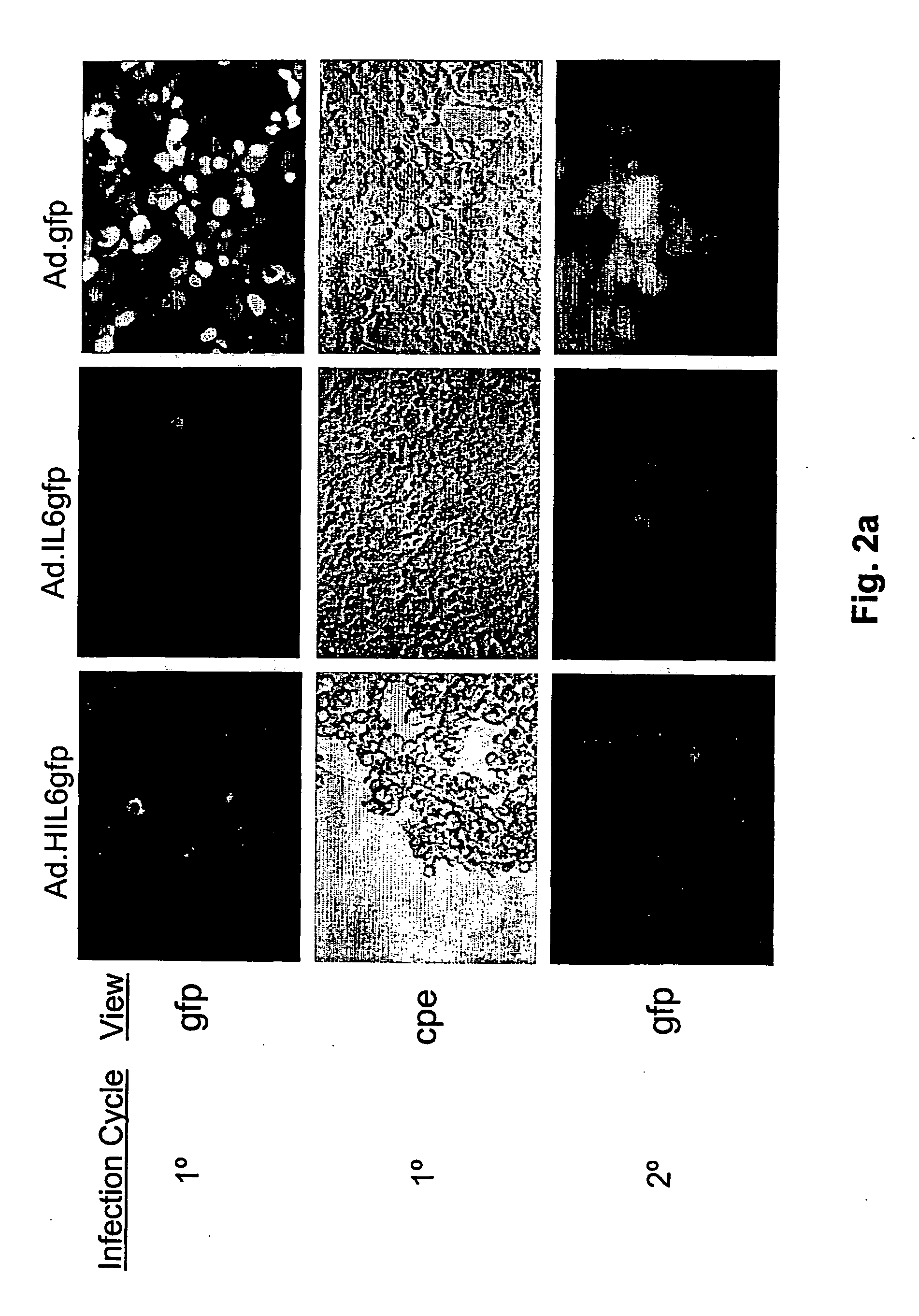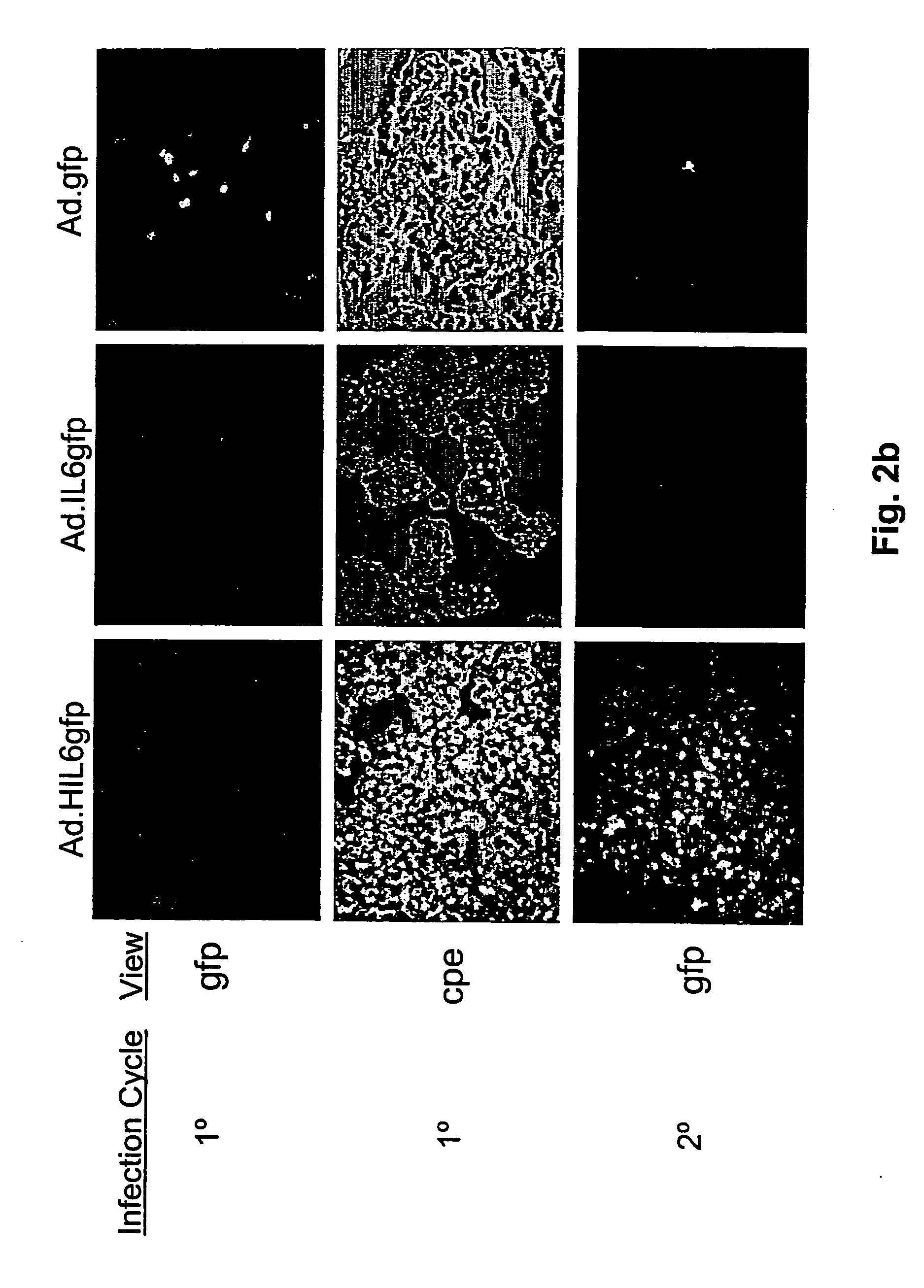Compositions and methods for treating cancer with an oncolytic viral agent
a technology of oncolytic viral agents and cancer, applied in the field of recombinant adenoviral vectors, can solve the problems of lack of efficient cancer treatment methods in the early art, and achieve the effect of enhancing the ability to obtain viral stocks and high yield
- Summary
- Abstract
- Description
- Claims
- Application Information
AI Technical Summary
Benefits of technology
Problems solved by technology
Method used
Image
Examples
example 1
An Adenoviral Vector Encoding HIL-6 Replicates and Induces Cytopathic Effects in Transduced Tumor Cell Lines
[0082] In order to explore whether expression of a virally encoded HIL-6 gene would enable E1A deficient adenoviral vectors to replicate in otherwise non-permissive cell lines, the ability of a series of E1 / E3 deficient adenoviral vectors that encoded either a human HIL-6 gene (Ad.HIL6gfp), a human IL-6cDNA (Ad.IL6gfp), or no cytokine transgene (Ad.gfp) to infect and replicate in immortalized or tumor derived cell lines was determined. The cell lines examined included the human hepatocellular carcinoma derived cell lines, HepG2, and E1A positive HEK 293 cells. All recombinant viruses used for these experimental systems encoded the gfp reporter gene to enable efficient verification of viral transduction. As shown in FIG. 2a, all of the recombinant viruses showed a similar ability to replicate in the E1A positive HEK 293 cells, which are permissive for E3 / E3 deficient vector r...
example 2
Cytopathic Effects of Ad.HIL6gfp Infection in HepG2 Cells
[0085] In order to quantify the cytopathic effect of the viral infection, HepG2 cells were infected with either Ad.HIL6gfp or Ad.gfp at an m.o.i of˜1, and were incubated with the viruses for two days and then assayed for surviving cells by methylene blue staining. The results of this analysis revealed that while approximately 80% of the Ad.gfp infected cells survived, only about 20% of the Ad.HIL6gfp infected cells were viable following the incubation period (FIG. 3).
example 3
HIL-6 Protein Enables Replication of E1A Deficient Ad5 Vector in HepG2 Cells
[0086] To confirm that HIL-6 enabled replication of an E1A deficient vector, HepG2 cells were infected with Ad.gfp, in the presence or absence of purified recombinant HIL-6 protein added to the culture media (FIG. 4). As shown in FIG. 4b, although far less robust than in the matching GH329 cell cultures (FIG. 4a), Ad.gfp infected HepG2 cells cultured for three days in the presence of exogenous HIL-6 protein displayed more gfp activity in comparison to identical cultures lacking HIL-6, suggesting that HIL-6 enabled viral replication. The HIL-6 protein supplement had no obvious effect on gfp expression or viral propagation in cultures of GH329 cells infected with Ad.gfp (FIG. 4). To verify that viral replication had indeed occurred in the HIL-6 supplemented HepG2 cell cultures, lysates from the primary infected cells were prepared and applied to HEK 293 cells. As anticipated, cells infected with Ad.gfp in the...
PUM
| Property | Measurement | Unit |
|---|---|---|
| Time | aaaaa | aaaaa |
| Composition | aaaaa | aaaaa |
| Mass | aaaaa | aaaaa |
Abstract
Description
Claims
Application Information
 Login to View More
Login to View More - R&D
- Intellectual Property
- Life Sciences
- Materials
- Tech Scout
- Unparalleled Data Quality
- Higher Quality Content
- 60% Fewer Hallucinations
Browse by: Latest US Patents, China's latest patents, Technical Efficacy Thesaurus, Application Domain, Technology Topic, Popular Technical Reports.
© 2025 PatSnap. All rights reserved.Legal|Privacy policy|Modern Slavery Act Transparency Statement|Sitemap|About US| Contact US: help@patsnap.com



